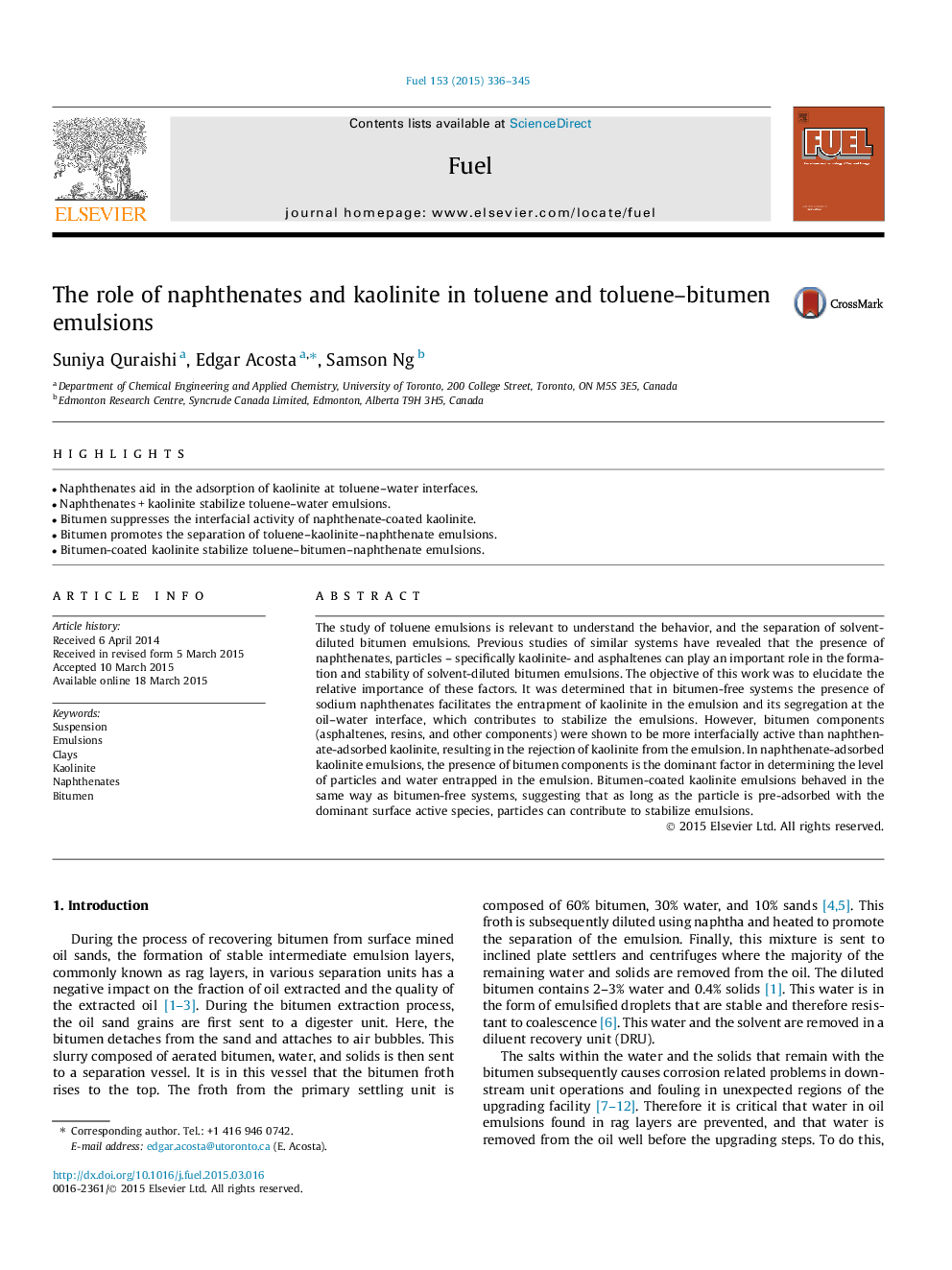| Article ID | Journal | Published Year | Pages | File Type |
|---|---|---|---|---|
| 6635592 | Fuel | 2015 | 10 Pages |
Abstract
The study of toluene emulsions is relevant to understand the behavior, and the separation of solvent-diluted bitumen emulsions. Previous studies of similar systems have revealed that the presence of naphthenates, particles - specifically kaolinite- and asphaltenes can play an important role in the formation and stability of solvent-diluted bitumen emulsions. The objective of this work was to elucidate the relative importance of these factors. It was determined that in bitumen-free systems the presence of sodium naphthenates facilitates the entrapment of kaolinite in the emulsion and its segregation at the oil-water interface, which contributes to stabilize the emulsions. However, bitumen components (asphaltenes, resins, and other components) were shown to be more interfacially active than naphthenate-adsorbed kaolinite, resulting in the rejection of kaolinite from the emulsion. In naphthenate-adsorbed kaolinite emulsions, the presence of bitumen components is the dominant factor in determining the level of particles and water entrapped in the emulsion. Bitumen-coated kaolinite emulsions behaved in the same way as bitumen-free systems, suggesting that as long as the particle is pre-adsorbed with the dominant surface active species, particles can contribute to stabilize emulsions.
Related Topics
Physical Sciences and Engineering
Chemical Engineering
Chemical Engineering (General)
Authors
Suniya Quraishi, Edgar Acosta, Samson Ng,
